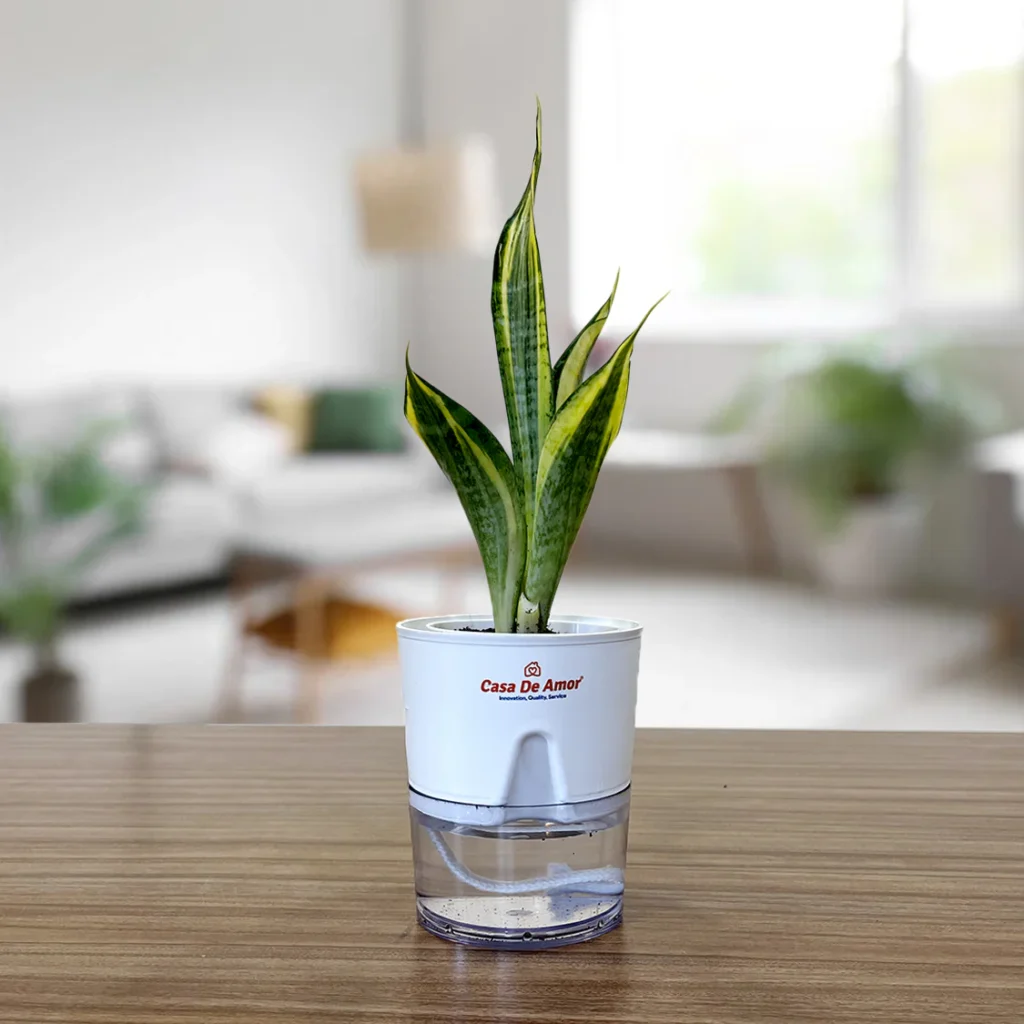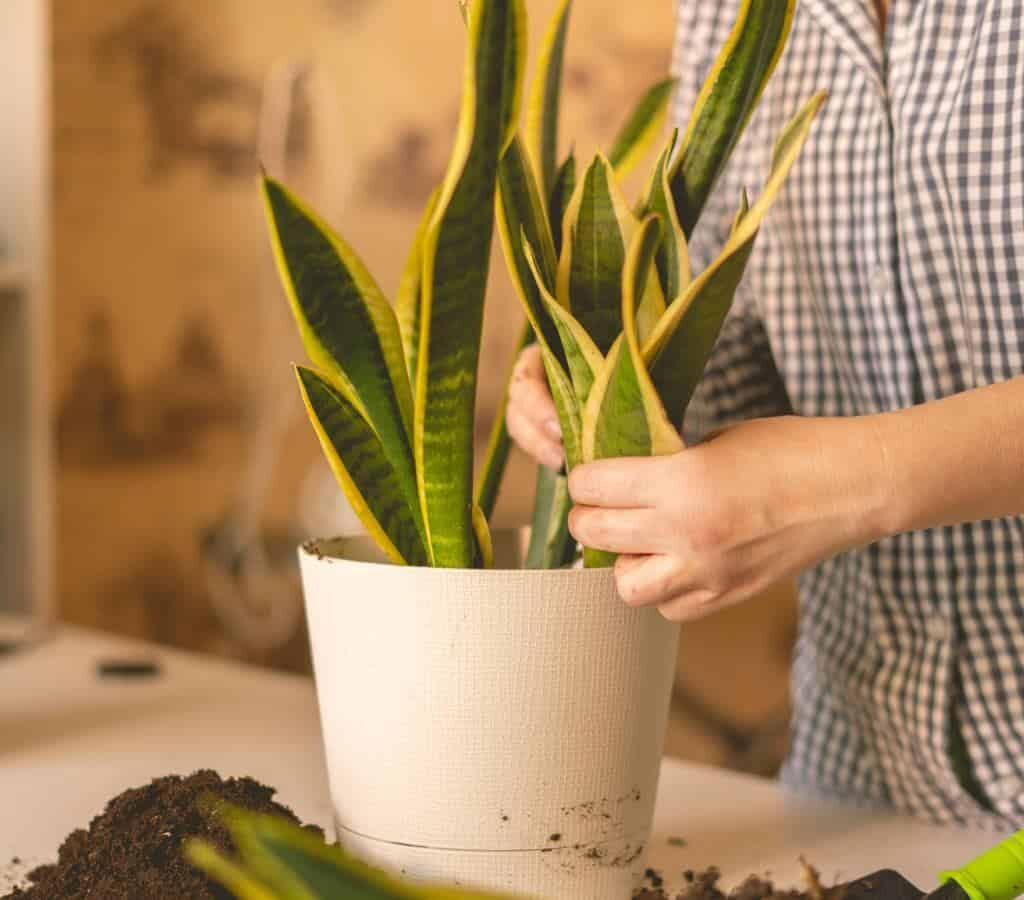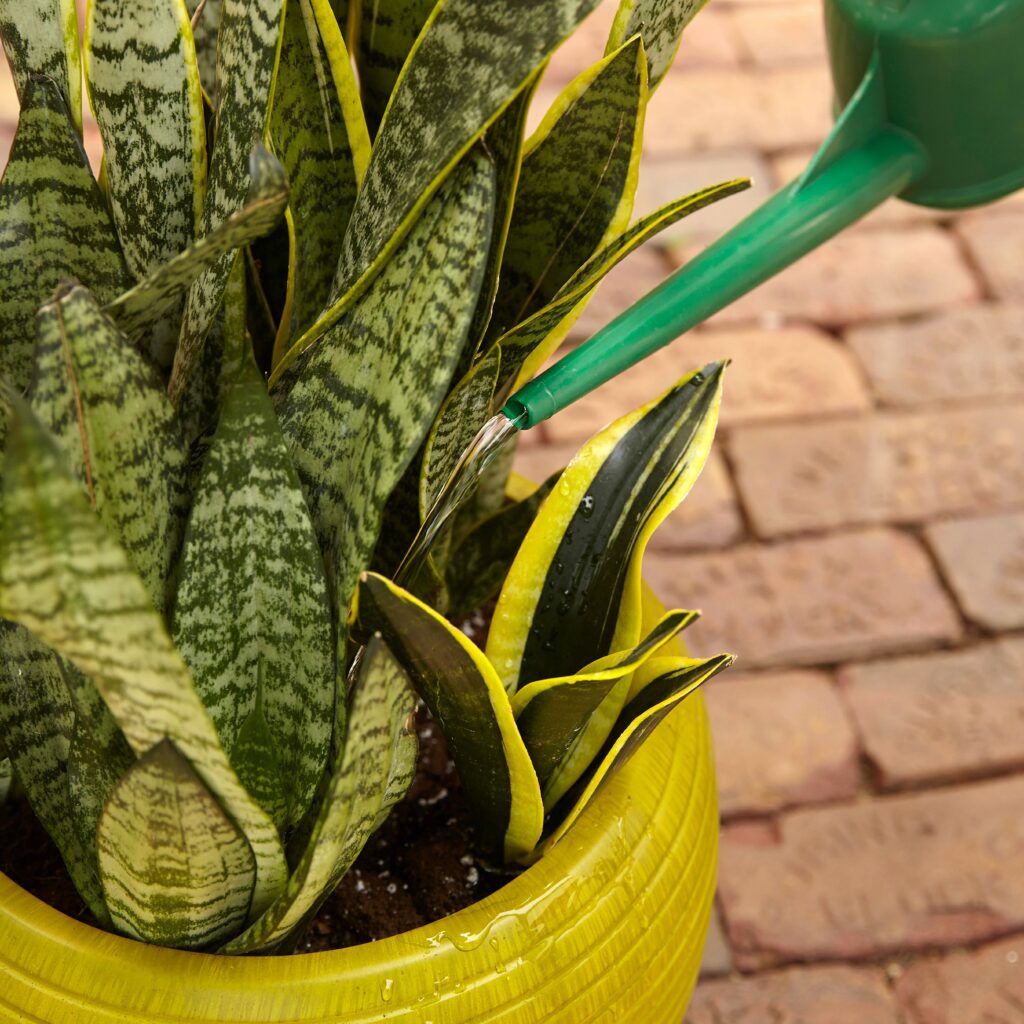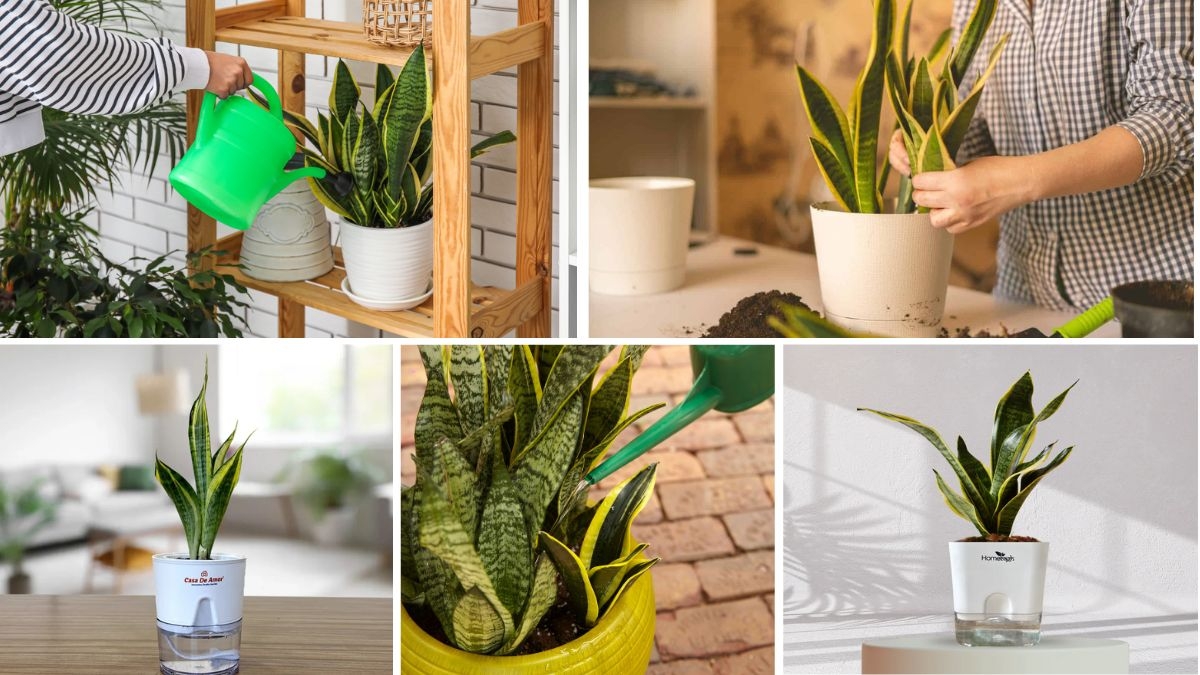Snake plants (Sansevieria trifasciata), also known as mother-in-law’s tongue, are among the most popular indoor plants in the world—and for good reason. They are tough, beautiful, and nearly indestructible, making them perfect for beginners. But even though they have a reputation for being low-maintenance, the most common mistake new plant owners make is overwatering.
Getting the watering routine right is the key to keeping your snake plant thriving for years. This guide covers everything beginners should know about watering snake plants—from understanding their natural needs to avoiding the most common watering pitfalls.
1. Understanding the Snake Plant’s Natural Water Needs

To water your snake plant correctly, it helps to know where it comes from. Snake plants are native to dry, arid regions of Africa where rainfall is infrequent. They have evolved thick, upright leaves that store water for long periods, allowing them to survive in drought-like conditions.
This means:
- They prefer dry soil between waterings.
- They can tolerate some neglect better than too much attention.
- Overwatering can be deadly.
In essence, your watering goal is to mimic their natural environment—short bursts of water followed by long dry periods.
2. General Watering Frequency for Snake Plants

While there’s no one-size-fits-all schedule, most snake plants thrive when watered:
- Spring and Summer (active growth period): Every 2–4 weeks, depending on conditions.
- Fall and Winter (dormant period): Every 4–6 weeks or less.
The golden rule: Water only when the top 2–3 inches of soil are completely dry. You can check this by sticking your finger into the soil or using a moisture meter.
3. Seasonal Watering Guide

Spring
- Growth begins to pick up.
- Water every 2–3 weeks, depending on light and temperature.
- Avoid soaking leaves to prevent fungal issues.
Summer
- Plants grow faster in warm weather and bright light.
- Water every 2–3 weeks in bright rooms, or every 4 weeks in low light.
- Hot, dry climates may require slightly more frequent watering.
Fall
- Growth slows as light levels drop.
- Reduce watering to once every 4 weeks.
Winter
- The plant enters dormancy, using less water.
- Water once every 4–6 weeks, and only if the soil is bone dry.
4. Factors That Affect How Often You Should Water

1. Light Levels
- Bright, indirect light: Soil dries faster → More frequent watering.
- Low light: Soil stays wet longer → Water less often.
2. Temperature & Humidity
- Warm, dry rooms make soil dry faster.
- Humid or cooler spaces slow evaporation.
3. Pot Size & Material
- Small pots dry faster than large ones.
- Terracotta pots absorb moisture from the soil, leading to quicker drying compared to plastic pots.
4. Soil Type
- Well-draining soil prevents root rot.
- Dense, clay-like soil holds too much water and needs less frequent watering.
5. How to Water Snake Plants the Right Way

Watering is more than just pouring water on your plant—it’s about method and moderation.
Step-by-Step Watering Method
- Check Soil Moisture: Use your finger or a moisture meter to ensure the top 2–3 inches are dry.
- Lift the Pot: If it feels unusually light, it’s probably time to water.
- Water at the Base: Pour water directly into the soil, avoiding the leaves.
- Water Evenly: Slowly pour until water begins to drain from the bottom.
- Empty the Saucer: Never let your snake plant sit in standing water.
Pro Tip: If you accidentally overwater, tip the pot slightly to let excess water escape, and place it in a warm, airy location to speed up drying.
6. Signs You’re Underwatering Your Snake Plant
Snake plants are drought-tolerant, but they still need occasional watering. Signs of underwatering include:
- Wrinkled or curling leaves
- Crispy brown edges
- Slower-than-usual growth during the active season
- Leaves bending or folding inward
If you see these signs, give your plant a deep drink, but return to the “dry between watering” rule afterward.
7. Signs You’re Overwatering Your Snake Plant
Overwatering is the number one killer of snake plants. Watch out for:
- Yellowing leaves
- Mushy, soft leaves near the base
- Foul smell from the soil (sign of root rot)
- Leaves falling over easily
If overwatering happens:
- Remove the plant from the pot.
- Trim away any mushy, black roots.
- Repot in fresh, dry, well-draining soil.
8. Choosing the Best Water for Snake Plants
Snake plants aren’t too picky, but water quality can affect their health over time.
- Tap Water: Generally fine, but if your tap water is heavily chlorinated, let it sit for 24 hours before using.
- Rainwater: Excellent choice—soft and natural.
- Filtered Water: Best for avoiding mineral buildup in soil.
9. The Importance of Proper Drainage
Even the perfect watering schedule will fail if your pot doesn’t drain well.
- Always use a pot with drainage holes.
- Place a saucer under the pot, but empty it after each watering.
- Use a succulent/cactus soil mix or add perlite/sand to standard potting mix for better aeration.
10. Indoor vs. Outdoor Watering Tips
Indoor Snake Plants
- Dry indoor air can cause leaves to lose moisture faster.
- Water less often in low-light rooms and more often in bright, sunny rooms.
Outdoor Snake Plants
- In warm climates, water every 1–2 weeks during summer if in full sun.
- Bring indoors before frost—snake plants are not cold-tolerant.
11. Common Watering Mistakes Beginners Make
- Sticking to a rigid schedule instead of checking the soil.
- Watering from above the leaves, which can cause rot.
- Using dense, non-draining soil, trapping moisture around roots.
- Not adjusting for seasonal changes—watering too much in winter is a common cause of death.
12. Quick Reference: Snake Plant Watering Chart
| Season | Frequency | Notes |
|---|---|---|
| Spring | Every 2–3 weeks | Increase slightly in bright light |
| Summer | Every 2–3 weeks | Water more if in hot, dry conditions |
| Fall | Every 4 weeks | Reduce as growth slows |
| Winter | Every 4–6 weeks | Only water when completely dry |
13. Final Tips for Beginner Success
- Always err on the side of underwatering—snake plants forgive dryness but not soggy roots.
- Pair proper watering with good light, well-draining soil, and correct pot size for best results.
- Remember, each plant is unique—observe your snake plant’s leaves and soil, and adjust accordingly.
In Summary
Watering a snake plant correctly is about patience and observation. Let the soil dry between waterings, use the right technique, and pay attention to seasonal changes. With the right approach, your snake plant can live for decades, becoming a striking, air-purifying centerpiece in your home.
By mastering these simple yet crucial watering tips, even a complete beginner can grow a thriving, healthy snake plant that stands tall and proud year after year.




Leave A Comment